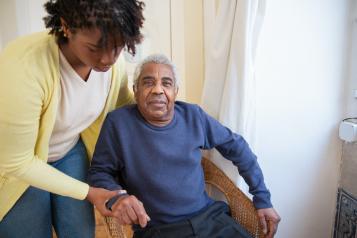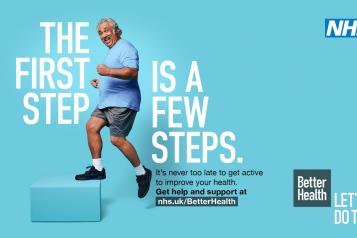A Healthy Location? 5 Findings About Health in South-West London

The NHS for South-West London reviewed nearly 200 reports from Healthwatches, organisations, and community interest groups to bring together the Joint Forward plan.
Joint Forward proposes a shift in attitude from responding to illness, to preventing poor health. As Wandsworth locals tell us they want more support to stay healthy, we will keep watch to see how the NHS meets these bold ambitions in the next 5 years.
“We are clear that… the ambitions in this plan will need us all to work together differently, as we shift our focus from treatment to prevention, support people to make healthy choices, and improve our services and the way we provide care.” – Joint Forward
Here are 5 Health Facts about South-West London
- Exercise and getting outdoors.
The Office of National Statistics (ONS) data tells us that residents in South-West London have poorer access to private and public green space. They are less likely to use outdoor space for exercise than people who live elsewhere in the country, and 1/3 adults exercise for less than 30minutes per week.
- Children and Young People’s mental health.
Around 16,000 under 18s receive (community NHS funded) mental health treatment in South-West London. This is 4.5% of children and young people, which is above the London average of 4.1%. Kingston, Richmond, and Sutton, have some of the highest hospital admission rates for self-harm in London.
- Cancer screenings and cancer deaths.
Coverage of cancer screening is frequently lower in our population than targeted and cancer is the leading cause of death in South-West London. Breast cancer screening uptake is lower now than it was 10 years ago. 2.7% of the population have been diagnosed with cancer and they are most likely to reside in the least deprived boroughs.
- Alcohol related illnesses and smoking.
Alcohol related illnesses are lower in our population and residents are less likely to smoke compared to the rest of England.
However, there are some groups that are at a much higher risk. Patients with a long-term mental health issue are twice as likely to smoke as other patients, and children and young people are more likely to be admitted to hospital due to alcohol than if they lived elsewhere in London.
- Risks to carers in the population.
7% of people living in South-West London are known to provide some form of unpaid care. Evidence suggests that health professionals only identify 1 in every 10 carers, so the number of residents providing care is likely to be much higher. This is important because unpaid carers are more than twice as likely to have poor health and caring can have a negative impact on the carer’s physical and mental health, as well as education and employment. National data suggests that 1 in 4 young carers feel lonely, and young carers are three times more likely to report a long-term mental health condition than non-carers of the same age.
Overall, it is important to note that the health picture in the 6 South-West London boroughs varies with factors like deprivation, population density, and average age of residents.
The most deprived borough in South-West London is Croydon and the most densely populated borough is Wandsworth. Over 50% of the Core20 population (the 20% most likely to experience health inqualities) live in Croydon.
However, hospital admissions for self-harm, and the highest percentage of cancer patients are located in the least deprived boroughs: Richmond, Kingston, and Sutton.
This information helps us understand health challenges and opportunities in South-West London. As the NHS progress the Joint Forward Plan we will be engaging these goals and promises to make sure that local people have their say.


